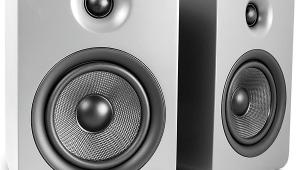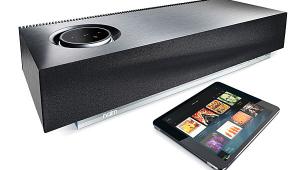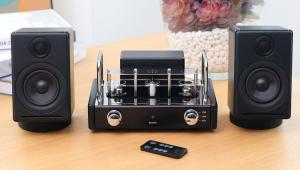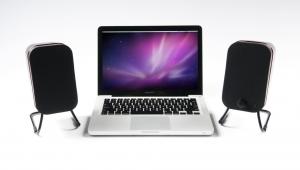Sony CAS-1 Compact Audio System Review Page 2
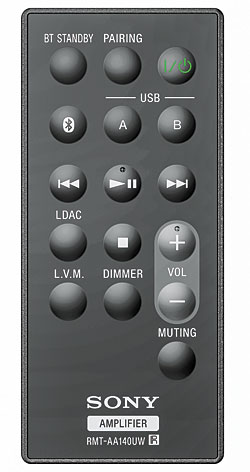 For computer use, the amp should auto-install its audio driver. I installed it on two Windows 10 desktop PCs, one automatically with no complications, the other manually. Windows SmartScreen, which discourages automatic installation of unrecognized apps and files, had to be temporarily disabled for the second machine; this wasn’t a Sony problem per se. Designating the CAS-1 as the default device in Windows and selecting its device driver in Foobar (my versatile no-frills audio software of choice) was standard procedure.
For computer use, the amp should auto-install its audio driver. I installed it on two Windows 10 desktop PCs, one automatically with no complications, the other manually. Windows SmartScreen, which discourages automatic installation of unrecognized apps and files, had to be temporarily disabled for the second machine; this wasn’t a Sony problem per se. Designating the CAS-1 as the default device in Windows and selecting its device driver in Foobar (my versatile no-frills audio software of choice) was standard procedure.
The Resolution that Startles
My first moments with the CAS-1 amp and speakers were startling. Just for break-in, I played the Bill Evans Trio’s Sunday at the Village Vanguard (ALAC 44.1/16). The music—including the string bass, with its full complement of woody overtones—sounded warmish and well resolved. But what grabbed me was the applause. No, it didn’t exactly place me in the audience at the legendary jazz club in 1961. But it was far from speaker-bound. The handclaps imaged around the speakers in a 360degree cloud of tiny percussive events. This was my first taste of the system’s stellar near-field performance. As good as my Peachtree Audio Decco2 amp and Era Design 4 speakers are, those speakers aren’t designed for near-field listening. But with the Sony system, I got great imaging, even when I sat 25 inches away—5 inches closer than recommended.
Keith Jarrett’s Creation (44.1/16) reinforced my impression that this system knows how to image a piano, even if the left-hand bass parts were limited by the small woofers. (The system has no subwoofer output, so if you add a sub, you’ll have to use the speaker-level connection. Sending the signal through the sub’s passive high-pass filter may degrade sound; be willing to experiment.)

The Endless River (ALAC 44.1/16), Pink Floyd’s parting shot at a mostly instrumental album, tends to be lively to a fault on most gear. Here is where Sony’s characteristic voicing came in handy, politely rolling off the brittle top end. The hot mix often works against the album’s contemplative flow, so I felt I was hearing it in a new and better way.
Moving into hi-res territory, I played Debussy’s La Mer, Jeux, and Prélude à l’après-midi d’un faune, as performed by Valery Gergiev and the London Symphony Orchestra for its LSO Live label (FLAC 48/24, courtesy of the B&W Society of Sound). The Prélude was up to expectations, with a warm feel, loads of tone color, and as much resolution as I’ve ever gotten from a desktop mini-system.
I plugged in a pair of HiFiMan Edition X headphones and replayed the Prélude. Even accounting for the shift from small speakers supplied with a $1,000 system to full-sized planar headphones selling for $1,799, the laser-focused imaging was once again—I can’t resist repeating the word—startling. It was like going from the back rows of a good concert hall to the front rows of a better one. Details like the gently chiming triangle at the end of the work reverberated sweetly in vividly depicted space. Switching back to the speakers for the undulating waves of La Mer traded a little resolution and a lot of scale for more overall comfort, but the system gloried in the hi-res material either way.
If the Debussy was that much better through the headphone jack, how about the other music? I’m glad I checked. In the Bill Evans recording, the HiFiMan headphones got way more out of the DAC than the speakers did. Overtones suddenly appeared in the piano, and the subtle exhalation of cymbals was more audible. In “Louder Than Words” from the Pink Floyd album, the headphones imaged David Gilmour’s lead vocal like “world weary” flesh and blood in a way that I’ve never heard before with any other equipment.

The HiFiMan/Sony team continued to raise an eyebrow with Wayne Shorter’s Speak No Evil (FLAC 192/24, courtesy of HDtracks). The album has never sounded less than fulfilling in a hi-res format, but the planar headphones revealed more of the inner detail of each instrument without interfering with the relaxed feel of the reverb-averse mix. Freddie Hubbard’s trumpet was among the chief beneficiaries, with truer timbre and better articulation. Elvin Jones’ drums, though exiled to the right channel, were snappier, and his cymbals more realistic, the right mixture of soft and metallic.
Noah Wall’s Down Home Blues (AIFF 192/24) mates the soprano with various acoustic instruments in a classic Chesky live-in-the-studio recording that has subtle reverb and a natural, ungimmicky feel throughout. The close-miked string bass was plummy, especially through the HiFiMan headphones, but not enough to distract from the lead vocal, whose dynamic contours were scrupulously preserved.
You might look at the Sony CAS-1 and wonder whether this slender amp-and-speaker package is worth a thousand bucks, especially considering its lack of a subwoofer output. What a quick glance at a photo doesn’t reveal is how good the DACs are and how much they contribute to the system’s resolution and voicing through both its own speakers and a great pair of headphones. If desktop space is at a premium, but you still want a hi-res audio system that leverages your investment in such headphones, here is a superb choice.
- Log in or register to post comments


